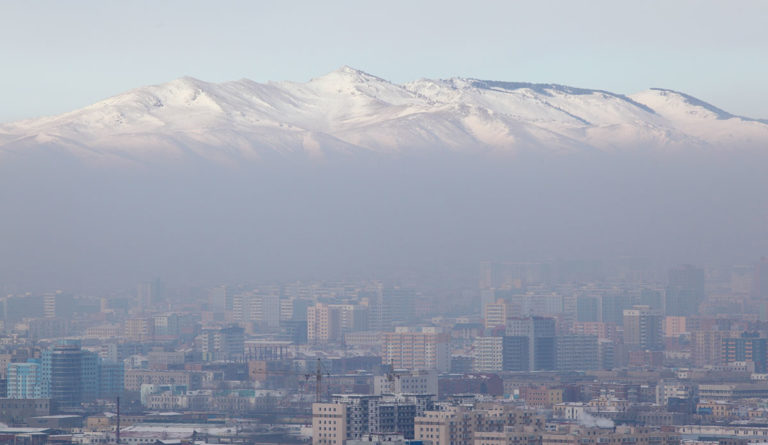Fighting Pollution with Open Data
Air pollution is responsible for one out of every eight deaths on the planet. OpenAQ uses the power of open data as a convening force to connect a global community on air pollution research. Read three ways the public health community can help.

Read Time: 6 minutes
Published:
Air pollution is responsible for one out of every eight deaths on the planet, yet it is overlooked by many as a key global public health issue. After all, no one dies from anything called ‘air pollution disease,’ but rather cardiovascular and respiratory issues that result from exposure.
Air pollution research is often lacking in the most polluted places. The figure below shows that the ten most polluted cities from a 2011 WHO database had a combined total of approximately 41 papers published involving air quality and health. Meanwhile, Houston had nearly 200 papers, alone, and an order of magnitude cleaner air.

The lack of air pollution studies in the most polluted places affects our understanding of air pollution’s impact on health. While the causal relationships between different types of air pollution and mortality are well-established through large-cohort epidemiological, toxicological, and exposure studies, how mortality is affected in the most polluted places – where billions live – is not understood with the same policy-relevant precision as it is in places with lower air pollution.
The lack of air pollution studies in the most polluted places affects our understanding of air pollution’s impact on health.
Open data helps change this picture. Seven out of ten of the most cited large-cohort epidemiological air quality studies relied on open governmental data. These studies had outsized-impacts on countries’ national air quality standards and international guidelines. Additionally, when governments’ air quality data are made open, an ecosystem of scientists, journalists, software developers, and others can ‘humanize’ these data, galvanizing local communities.
Our grassroots, global community, OpenAQ (openaq.org), noticed that many countries publicly share air quality data, including in highly polluted places. The problem is that these data are often temporarily available and are always in disparate forms, making it difficult to easily access. Through an open-source effort, we have built a system that aggregates physical air quality data from 48 countries and makes them truly open. We now receive approximately six million data requests per month to our platform from all over the world, and community members are using the data to model wildfires in real-time, build global air quality apps like hackAir, create open-source projects like py-openaq, and inform low-cost sensing platforms like Airveda.
We use the power of open data as a convening force to connect a global community virtually in online forums such as Slack and Twitter…
We use the power of open data as a convening force to connect a global community virtually in online forums such as Slack and Twitter, and also to hold in-person workshops that connect disparate sectors in a given community facing extreme pollution. For example, this past February we held a workshop in Sarajevo, Bosnia, which experiences high levels of particulate matter from winter-time burning of fossil fuels and its location in a valley. At this workshop, public health officials, air quality agency experts, activists, scientists, and others came together in order to learn about and access open air quality data, but in the end crafted a Community Statement that influenced Bosnian Parliament members on air quality thresholds.
But we have a long way to go in bringing the true potential of open air quality data to bear. In terms of the data themselves, there are at least 20 more countries sharing air quality data publicly that have not yet been aggregated into our system – and thousands of individual government-level stations across the world. In addition to the data, we need to find more ways to connect disparate sectors with one another to fully maximize the power of open air quality data and one another.
To do this, we are seeking the help of the public health community in three ways:
1. Help figure out what the global landscape of government-level air quality data,
Currently, there is no official, centralized place where one can find the list of countries that measure and publicly share near-real time ground-level air quality data. We estimate there are at least 70 countries generating such data, but this estimate is imprecise and the true data coverage across a given country is unknown on a global scale. Yet this information is critical for anyone to understand the global air quality landscape – and its gaps.
We are working to paint the air quality landscape in greater detail through a campaign called #FixtheAQGap, run in collaboration with our partners at World Resources Institute and Development Seed. It invites anyone, anywhere to input information on any government-level air quality systems publicly sharing data around the world. We then review the input and work to add the data source to our system, making the open data more accessible to more people.
If you know of a government-level air quality data source, you can contribute your knowledge to this effort by filling out this form.
2. Demand government air quality data sources be made open for all.
Some governments that measure air quality make their data available only in long-term averages listed in an annual report. Some governments charge money for the air quality data they measure. Some governments report data only in a unitless air quality index that makes it difficult or impossible to decipher the true physical measured parameters. None of these routes enable the public to help realize the full potential of these data. Additionally, many governments do not yet make their data programmatically accessible (e.g. via an API), but rather post a table or graphic of data on website. For truly open data, demand any government-measured air quality data in your community be made transparent and free to the public in a timely and programmatic manner
3. Get connected with those outside of the public health sector who are seeking air pollution expertise, like yours.
In our virtual community, there are always software developers, educators, journalists and others seeking public health experts who can help them accurately convey an air pollution issue to the public. If you are interested in connecting with a diverse global community of individuals fired up about air pollution, join us on our Slack channel and contribute to the conversation.
Solving air pollution isn’t rocket science, but it does take a sustained attention from communities, nations, and the world, working together and with open data.
Feature image: Einar Fredriksen, Mongolia 2010 405, used under CC BY-SA 2.0



